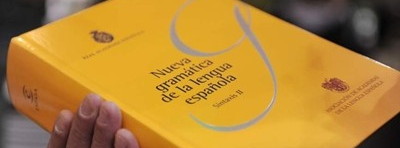 Preposición a - finalidad
Preposición a - finalidad
Learners of Spanish are usually taught that the preposition para is the translation of to/for when talking about the purpose of an action, e.g., 'salí para comprar pan' — 'I went out to buy bread'.
However, with verbs involving motion, the preposition a can be used instead of para and is actually far more common in certain constructions, especially in spoken Spanish.1
1) A can be followed by either the infinitive, que and the subjunctive (like para que), or a noun or pronoun. It is especially common with the verbs ir, venir and salir.
-Vengo a hablar con Juan
-¿A qué has venido? — What have you come for? / Why have you come?
-He venido a ayudarte — I've come to help you
-No vengo a eso — I haven't come for that
-Fui al taller a que me arreglaran el coche — I went to the garage to get my car fixed
-Fui a comprar a la tienda — I went to the shop to buy something [Infinitive can go first - read more]
-Salí un momento a fumar — I popped out for a smoke
-Sal un rato a que te dé el aire — Go out and get some air for a bit
-Se agachó a recogerlo — He bent over to pick it up
2) The preposition a can also be used with transitive verbs of movement.
-Lo he traído a vivir con nosotros un tiempo
-Lo llevé al dentista a que le miraran los dientes
-Mandé el informe al jefe a que le echara un vistazo antes de firmar el contrato
3) While a and para can alternate in many contexts, sometimes only para is possible.2-3
-Entré en casa a/para sentarme un momento
→Abrió la ventana para que entrara el aire (not movement)
→Se sentaron para no discutir (negation)
→Voy al médico a las seis para que me atiendan a las ocho (different times)
→Vengo para que tú puedas descansar (the subject is not involved or affected in the second verb)
4) The preposition a can also be used with verbs that imply interruption of movement.
-Me quedé en casa a dormir
-Me quiero quedar a vivir
-Me paré a pensar
5) The verb normally needs a destination or direction to be able to use a.4
-Viajé a Nueva york a verla
→Viajé muchos kilómetros para verla
-Corrió al hospital a que le curaran las heridas
→Corrió en la cinta del gimnasio para ponerse en forma
6) A selection of other verbs that do not involve movement but imply purpose also take the preposition a.5
-Lo ayudé a salir del pozo
-Me obligaron a trabajar
-Te animo a que sigas adelante
7) This use of the preposition a is also present in the expressions a qué viene, a qué in interrogative sentences, discussed previously.
-¿A qué viene tanta alharaca?
-¿A qué tanto ruido?
En La Prensa
Así que a eso vengo: a trabajar", aseguró Faurie, designado por Macri canciller en sustitución de Malcorra, ABC.es-Jun 12, 2017
No no me refiero a que no pueda ser interesante, no lo sé, porque bajara mucho el nivel estos años, pero está claro que el artículo miente, a eso voy. La Voz de Asturias (Comments)-Apr 30, 2017
Medios aéreos y marítimos buscan desde esta madrugada una embarcación de recreo a motor con dos tripulantes a bordo que salió a pescar ayer desde el Club Náutico de Moraira (Alicante) y no regresó, según han informado a Efe fuentes de Salvamento Marítimo. ABC.es-Jun 8, 2017
Según sus amigos, Ignacio fue el único que se paró a socorrer a la mujer que estaba siendo apuñalada y se enzarzó con el agresor. Faro de Vigo-Jun 13, 2017
In Español-Avanzado Articles
˜
-Preposición a - finalidad | a vs. para-

